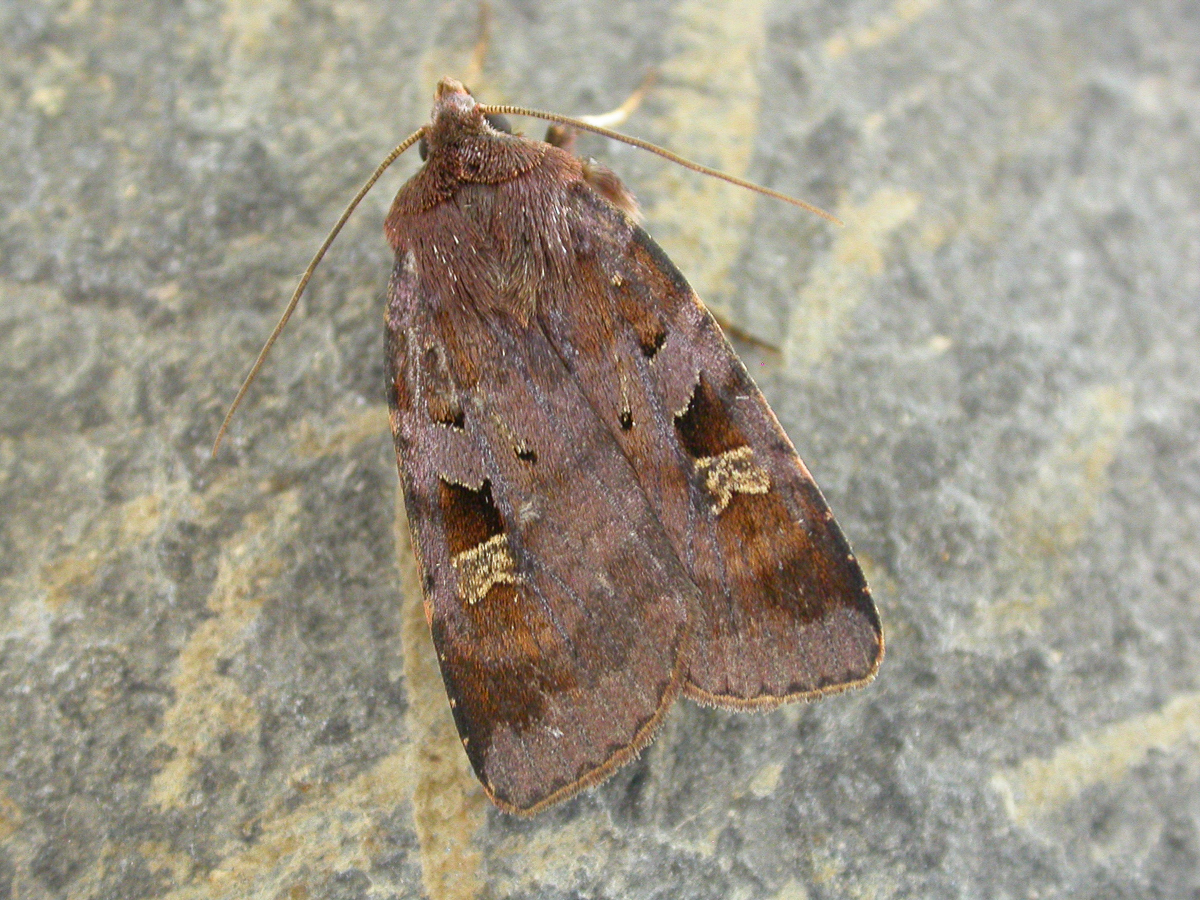
Photo © Andy Mitchell
Diarsia brunnea, the purple clay, is a moth of the family Noctuidae. The species was first described by Michael Denis and Ignaz Schiffermüller in 1775. It is found in most of Europe, east to Transcaucasia, the Caucasus, central Asia, Siberia, the Kuriles, Amur, Ussuri, Sakhalin, Korea, Japan, and China, including China's Tibet region.
The wingspan is 35–38 mm. Forewing pinkish or purplish-plum coloured; the costal half with a fulvous and yellow tinge; cell deep olive brown; claviform marked by a dark spot at its end; orbicular oblong, of the ground colour; reniform outlined or filled with ochreous; hindwing luteous (muddy yellow) fuscous; cilia pink.
Adults are on wing from July to August.
Larva dark brown; dorsal and subdorsal lines pale, lateral lines whitish; a row of pale yellow dark-edged oblique stripes, and a yellow stripe across segment 11. The larvae feed on a wide range of herbaceous plants and shrubs, including Rumex species (including Rumex acetosella), Dryopteris filix-mas, Luzula sylvatica, Deschampsia flexuosa, Brachypodium sylvaticum, Vaccinium myrtillus, Vaccinium uliginosum, Prunus spinosa, Primula, Rubus, Urtica, Salix and Betula.
Source: Wikipedia
The primary larval foodplants are Bilberry (Vaccinium myrtillus), birches (Betula spp.), Blackthorn (Prunus spinosa), Bracken (Pteridium aquilinum), Bramble (Rubus fruticosus), docks (Rumex spp.), figworts (Scrophularia spp.), Foxglove (Digitalis purpurea), Great Wood-rush (Luzula sylvatica), Heather (Calluna vulgaris), Hornbeam (Carpinus betulus) and willows (Salix spp.).